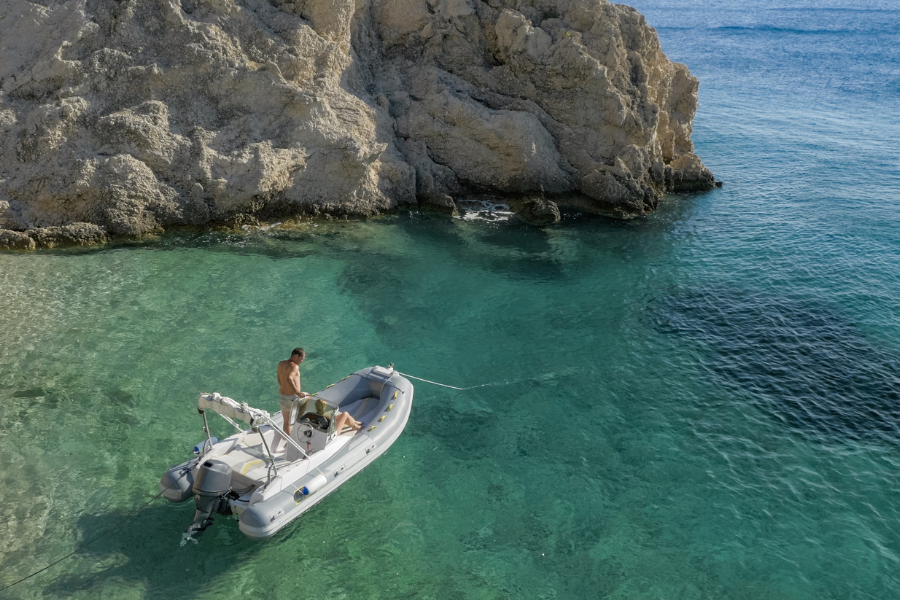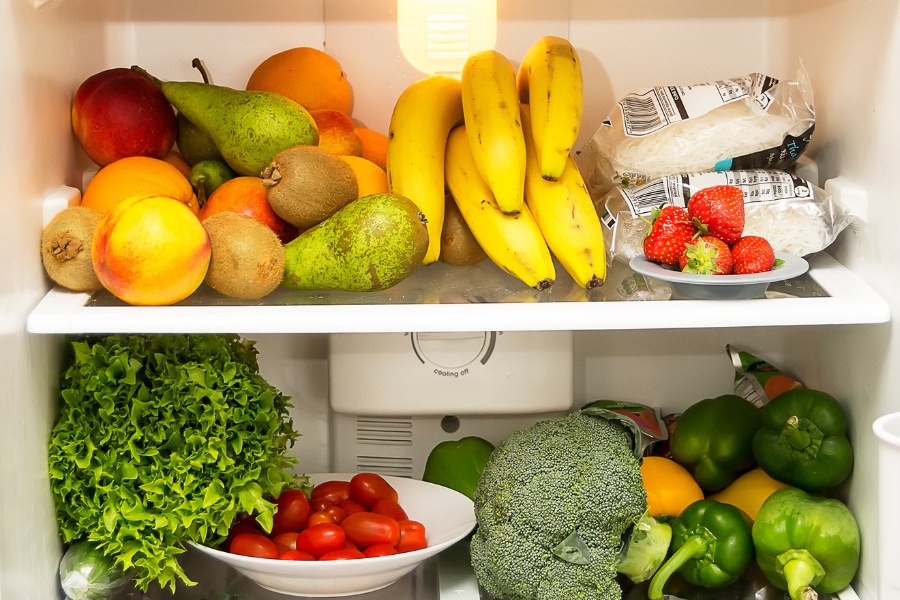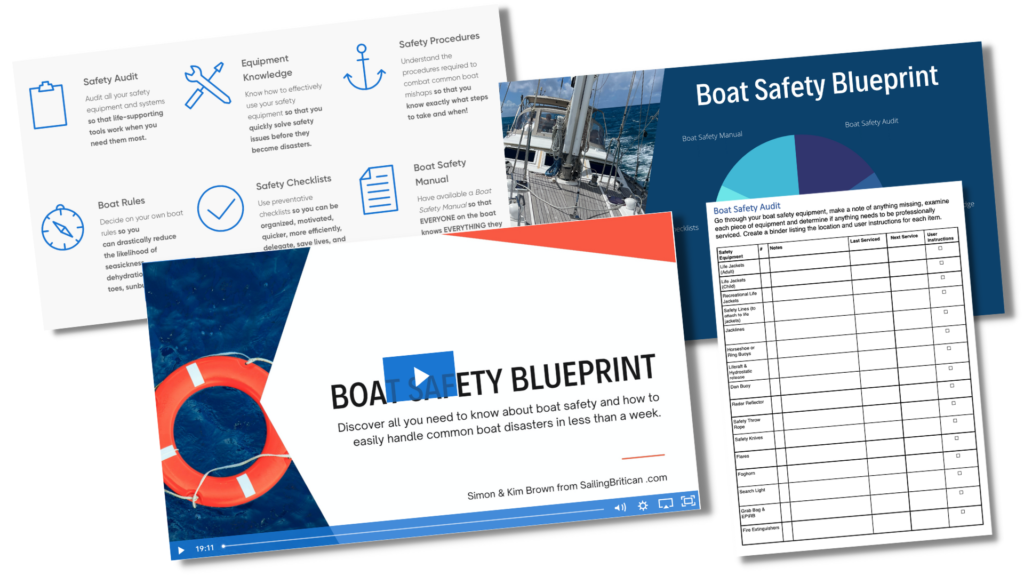Stocking the boat – what to bring versus what to leave behind? When embarking on a new lifestyle adventure like the sailing cruising life it’s vital to ensure that your expectations are set accurately. If they’re set too high disappointment becomes a concern and set too low, opportunities can be missed. Most aspiring cruisers read blogs, watch YouTube sailing channels, and gather loads of information prior to heading out to sea.
It’s no secret that boating is about fixing things in exotic places. So that’s an expectation. You’re going to have to fix things. The things will probably cost a bit of money and it will take longer than you expect. You know this already. Yes?
Aside from fixing things boating is also about new adventures, friendships, and magical memories. Overall, the cruising life is fabulous but it’s not all perfect and rosy. So I’m going to assume that you are already expecting to fix things and have the time of your life.
In an effort to expand on your expectations and enable you to better prepare for your sailing adventures, I want to cover the topic of what to stock the boat with and how to get things when you need them. Let’s start off with safety first.
Stock the boat with safety equipment
I’ve been harping on about safety equipment a lot recently. First and foremost before you leave the dock, you need to ensure your boat has all the safety equipment you need, it’s all serviced and in-date, you know how to use it AND you have procedures set so that if a common boating challenge comes up, you know how to deal with it.
Common boat issues are man overboard, engine failure, grounding, loss of steering, fire at sea, etc. If you have any unknowns about boating safety, make sure to watch my video entitled, The Boat Safety Blueprint, and grab a copy of my FREE Boat Safety Audit. Enough said. Click here to watch. Let’s move on to spare parts.
What spare parts should you take with you?
Before leaving your base port, and especially if you’re going to more remote areas (Bahamas, Caribbean, Pacific), you’ll want to take as many spare parts as you can. Additionally, it’s important to carry servicing kits. Servicing kits are pieces and parts of a system that often wear out and can be replaced rather than replacing a whole unit. For example, all the pumps you have on your boat will have a servicing kit. Go around your boat, make a list of what pumps you have, and then look up the servicing kits.
Your engines will have servicing kits and spare part recommendations too – find out what the manufacturer suggests that you carry with you. The kits and spare parts will be the items most likely to fail. Prepare yourself, however, for sticker shock as the engine spare part kits can be very expensive.
Why do you want to carry spare parts?
Well, if your engine dies it’s far easier (and cheaper) to look in your spare part box and fix it than it is to call for a tow. It’s also less frightening to know that you have the ability to fix a mission-critical system there and then. When we first started out I didn’t want to go anywhere near our engines. They scared me. Eventually, I realized that engines are not very complicated. Sure they have lots of moving parts but discovering a burst hose and replacing it is super easy.
Aside from engine parts and kits, another area to consider is the Heads. If your toilet pump leaks, it’s much quicker (and less smelly) if you have a seal kit on board than it is to traipse around looking for one at a boat store. Keep in mind that heading out to the store is not as easy as hopping in the car and going around the corner in a car! Heading into town for a part can take all day as a cruiser as it’s a dinghy ride, a 5-mile walk, a diversion to a beach bar, and…(it is much more enjoyable though).
And don’t assume that you’ll be able to get things that you think are common.
Case in point, we were in Mustique, a private island in St Vincent & the Grenadines (southern Caribbean). Our dinghy popped on a nail at the dinghy dock. Simon and I looked all over Britican but didn’t have a dinghy repair kit. Perhaps we assumed a dinghy repair kit would be easy to buy in the Caribbean islands so when stocking the boat we left it off?
We sailed to Bequia, a reasonable-sized island, and the local chandlery said they expected repair kits to arrive in a month or so. We then called the capital of St Vincent & the Grenadines and they were out of stock! Lucky for us we found another cruiser that had a repair kit.
That’s the equivalent of having our car wheel blow out and not being able to get a spare tire!
Until we located a dinghy repair kit we didn’t have any transportation from our boat to land. No Bueno. So – make sure you have a dinghy repair kit on your boat. Learn from our mistakes.

So, you want to take as many spares and service kits as you reasonably can. Also, consider ways to have redundancy. If something fails, do you have a backup? For our freshwater system, we have pressurized water that runs using electricity and pumps. If we lose electricity or a pump breaks, we have a hand pump to pump fresh water from our tank to our main sink. How will you get fresh water if your fresh water system fails?
For cooking, we have an electric stove. We also have a gas grill on the back of the boat and a Coleman gas camping stove tucked away in the bilge. If our electricity goes down or our stove breaks, we have alternative ways to cook.
We also have two fridges on the boat.
One we use as a fridge and the other can be a fridge or a freezer. If one goes down, we at least have a backup. Yes, things break often, but if you have backups it doesn’t mean that it’s a disaster. And if you can’t find a fix in your spare parts box nor at the local chandlery, usually there is a cruiser next to you that has what you need.
It may sound backward, but it’s often when things go wrong while living the sailing life that you realize things are actually going right. So many times we couldn’t find what we needed but on our quest to get a part we made a new friend or went on an amazing new adventure. Expect the unexpected and be open to whatever’s going to happen.

Are these stocking the boat backup systems really necessary?
Perhaps you’re thinking that if something breaks, you’ll just find the part you need wherever you’re located or you’ll have it shipped out to you. That will work if you’re in America. If you are, however, in the Med, Caribbean, or Pacific you’re going to run into two main issues:
- Parts are often impossible to find. No matter what it is you want or how common you think it is, often it’s not available.
- Shipping parts to these locations often results in very long time delays (months) and high costs. There is the cost to ship and then there are the cost to import (sometimes bribe) officials to get the item into the country.
With a few exceptions, we usually find the part we need, have it shipped to a friend in the US, and then pay for them to fly down with the part. Doing this allows us to get our part quickly and often it’s less expensive than the alternatives.
What are the exceptions?
Some countries are tax-free and allow for shipments to come into the country immediately upon arrival. St Martin is a great place to get deliveries within days. Puerto Rico is also good to buy items and/or have them shipped in. There are some countries that are exceptional for boat parts too. All the French and Dutch islands in the Caribbean have a massive selection of boating items. If you’re in St Lucia, for example, and you can’t get the part you need it’s worth calling Martinique (a French island above St Lucia). Chances are you can’t get it delivered, but at least you know where you can sail to get it.
Yes…that’s another thing to expect. Ferries and/or deliveries between different islands in the Caribbean are not common. You’d think that the people from St Vincent would take a ferry to their neighbors in Grenada or vice versa but it just doesn’t happen. There seems to be very little inter-island tourism or products. People on each island stay put. Products come from the US or the UK but not from the island next door.
And this leads me to my next topic that is very dear to my heart – food.
It’s very common for our readers to start off in the States and head to the Bahamas for the winter or to the southern Caribbean for hurricane season. If that’s your plan, let me give you a heads up about stocking the boat with provisions.
If you’re heading to The Bahamas, stocking the boat is about filling up every empty space on your boat with food and drinks. We did four trips to Costco/Sams Club and we were sleeping with food when we left.
In The Bahamas, there is a massive lack of choice and whatever you can find is outrageously priced. It makes no sense considering that The Bahamas are so close to America, but that’s the way it is. As a rule of thumb, when you fill up your freezer, fridge and every spare space on your boat know that you need to go out and buy more!
The next place to get things is Puerto Rico. You can get almost everything you can get in America but with a slight increase in price (if anything). After Puerto Rico, you’ll then want to be on the lookout for any French or Dutch island. Islands like St Martin, Guadeloupe, Martinique, and the ABC’s all have excellent grocery stores and boat chandleries. Outside of those islands, it’s a real crapshoot.

When on a French island we fill up our freezer with meats, cheeses, bread, beer/wine, paper, and cleaning products.
French islands have superior products, are less costly, and have the widest variety. The food and drink are subsidized for the population so it’s the same price you’d pay for items in France. Now, that’s not to say that we don’t buy groceries on other islands. We buy as much local produce as we can and often eat out enjoying local flavors. The issue often is that you can’t buy what you want because it’s just not available.
For example, I assumed that milk was a staple and you could buy fresh milk anywhere. When we were in Italy I only found fresh milk a couple of times. It’s often hard to find on the French Caribbean islands too. Europeans prefer UHT or long-life shelf-stable milk. In Grenada, the ship comes in on Wednesday so I discovered that on Thursday I could get fresh milk at the IGA. If I waited until Friday it would all be gone. Over time I realized that when I saw fresh milk, I’d buy a few and freeze them. You just have to pour a bit out so it doesn’t expand and burst the milk bottle.
So, there’s an element of stocking up the boat as much as you can before heading to more remote areas. Further, when you see something that’s hard to find, you’ll want to buy several.
What else do you need to stock up with before heading out?
What’s worth mentioning are bathing suits. Shorts, t-shirts, and summer dresses are easy to find as most islands have shops for tourists. For some reason, however, good quality bathing suits are not easy to get. Bras and underwear can be hard to come by too. Make sure you have a good stock of these items. If you’re on a French island find out if the store called Decathlon is there. It’s a huge sporting goods store. It’s the perfect sailing cruiser spot for bathing suits, flip-flops, snorkeling gear, and beach stuff.
Of course, if you’re going to be in areas that get cold, stocking the boat will include good bedding and even hot water bottles and slippers. When we spent the winter in Sicily it was very cold at night. I was thankful for the hot water bottles and I couldn’t have survived without my slippers. The coldness from the water seeps right into the boat even if you’re run your heating.
Another must-have item on the boat is a good vacuum. You’ll be vacuuming every day so you want something durable and with good suction. We’ve had three Dyson hand-helds over the past eight years. It’s usually the battery or charging station that breaks. They are not cheap but I wouldn’t have any other vacuum.
Lastly, a final must-have is a solid medical kit. This deserves a whole article in its own right.

What about books?
If you’re like me you love the feel of a proper book. Sure, the idea of Kinde makes sense, but nothing beats curling up in the cockpit, watching the sunset, and getting absorbed into a great book. Well, there are a couple of issues with books. First of all, they are heavy and unnecessary weight, especially on Catamarans as this is a big no-no. Secondly, and I tell you this to prepare you…books get lice. Yep, there are these little book bugs and no matter what you do you can’t prevent them. So – Kindle it is?!
What am I missing regarding stocking the boat?
Please leave your suggestions below.
And make sure to watch my latest video about the Boat Safety Blueprint. You can grab your boat safety audit PDF too.

Depending upon the most common type of nut/bolt size is Britican all metric or english for tools? MM or Inches?
Britican is both so we carry a variety 😉
Bananas are great if the rest needs ripening, but should be kept away from all other fruit and veggies, I believe.